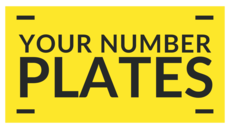Introduction: Where Luxury Meets Letters
Private number plates have become more than a luxury they’re an emblem of identity. And the most exclusive ones often change hands at DVLA auctions. Behind the glamour and adrenaline, these auctions are an intricate dance of timing, psychology, and patience. Winning smartly requires more than just deep pockets it requires strategy.
Understanding DVLA Plate Auctions
The Driver and Vehicle Licensing Agency (DVLA) organizes official auctions to sell previously unissued private registration plates. These plates are entirely legal, genuine, and come directly from the government’s stock making them the safest and most reliable way to buy. Over 60 million plates have been sold since the system began, with prices ranging from modest sums to eye-watering figures.
Why DVLA Auctions Matter to Collectors and Investors
For some, a private plate is personal expression; for others, it’s an asset. Certain combinations of letters and numbers can appreciate significantly in value over time. Savvy investors treat DVLA auctions as opportunities to acquire plates that could double or even triple in price within a few years. Like fine wine or art, the value of rarity only increases with time.
Types of DVLA Auctions
a. Timed Online Auctions
Timed auctions run for several days and allow bidders to place offers at any time. This format is ideal for those who prefer a measured approach, without the pressure of live bidding. Each plate has a clear closing time, encouraging strategic last-minute offers.
b. Live Online Auctions
Live online auctions replicate the energy of traditional bidding rooms, complete with an auctioneer. Participants can join virtually, watching bids rise in real time. The pace is quick, the competition fierce, and timing becomes everything.
c. Physical Auctions
Although less common today, physical DVLA auctions once drew crowds of enthusiasts to hotels and conference centres. While many of these events are now hybrid, they still offer a touch of nostalgia and the thrill of live competition.
How to Register and Participate
To join a DVLA auction, you must first register online through the official DVLA auction platform. The process involves creating an account, providing identification, and placing a refundable deposit usually around £500. Once verified, you can browse upcoming lots, view guide prices, and prepare your bidding strategy well in advance.
Setting a Realistic Budget and Avoiding Overbidding
Excitement is a double-edged sword. Many bidders lose perspective in the heat of the moment and overspend. Before entering any auction, determine your absolute maximum bid and stick to it. Remember: VAT and buyer’s fees are added on top of your winning amount. A disciplined budget is your best safeguard against impulsive regret.
Reading Between the Lines: Understanding Reserve Prices
Every plate in a DVLA auction has a reserve price the minimum the seller (in this case, the DVLA) will accept. If bidding doesn’t reach that threshold, the plate remains unsold. Understanding these reserves helps you avoid wasted effort on unattainable lots. The DVLA often lists estimated guide prices to help bidders gauge expected demand.
Smart Bidding Strategies That Win
Patience and observation win auctions, not reckless enthusiasm. Start by monitoring bids early, but avoid jumping in too soon. Late bidding—often in the final seconds—can catch competitors off guard. Use even-numbered bids or slightly unusual increments (like £5,025 instead of £5,000) to bypass automated bid systems. Most importantly, remain calm when others panic.
Mistakes First-Time Bidders Commonly Make
New bidders often underestimate hidden costs, overvalue emotional attachment, or assume all plates appreciate in value. Some forget to factor in VAT, while others misunderstand transfer timelines. The most critical mistake, however, is letting ego dictate bidding. Auctions are psychological battlefields where restraint equals success.
The Post-Auction Process: Payment and Certificate of Entitlement
Winning a plate is only the beginning. Once successful, you must settle your payment within a few days. The DVLA then issues a V750 Certificate of Entitlement, proving legal ownership of the registration. This document is vital—it allows you to assign or retain the plate for future use or sale.
Transferring Your New Plate to a Vehicle
After receiving your certificate, you can assign the plate to a vehicle through the DVLA’s online service. The process is swift—often completed within minutes. Once assigned, you’ll receive updated vehicle documents and can display your new plate legally.
Why Some Plates Skyrocket in Value
Certain letter and number combinations carry inherent prestige or cultural relevance. Short plates, names, initials, and witty wordplays tend to fetch the highest prices. For example, “25 O” sold for over £500,000, while “F 1” is now valued in the millions. Scarcity, simplicity, and recognizability all contribute to soaring valuations.
Long-Term Investment Potential of Auction Plates
Beyond vanity, private plates have become a niche investment class. Many investors purchase undervalued registrations at DVLA auctions and resell them later for significant profit. Like real estate, the market rewards those with foresight, patience, and a keen eye for desirability trends.
Tips from Experienced Bidders
Seasoned collectors recommend thorough research before every auction. Study past sale results, note recurring trends, and monitor bidding behavior. Register early to avoid last-minute issues, and never bid while emotional or distracted. The best deals often arise when others lose focus.
Conclusion: Strategy, Timing, and Nerve
Winning at a DVLA plate auction isn’t about luck—it’s about mastery. It requires strategic preparation, psychological composure, and an understanding of human behavior. Every successful bid tells a story of timing and restraint. Whether you’re buying for prestige, passion, or profit, the smartest bidders always remember: in the world of private plates, patience is the ultimate power.

